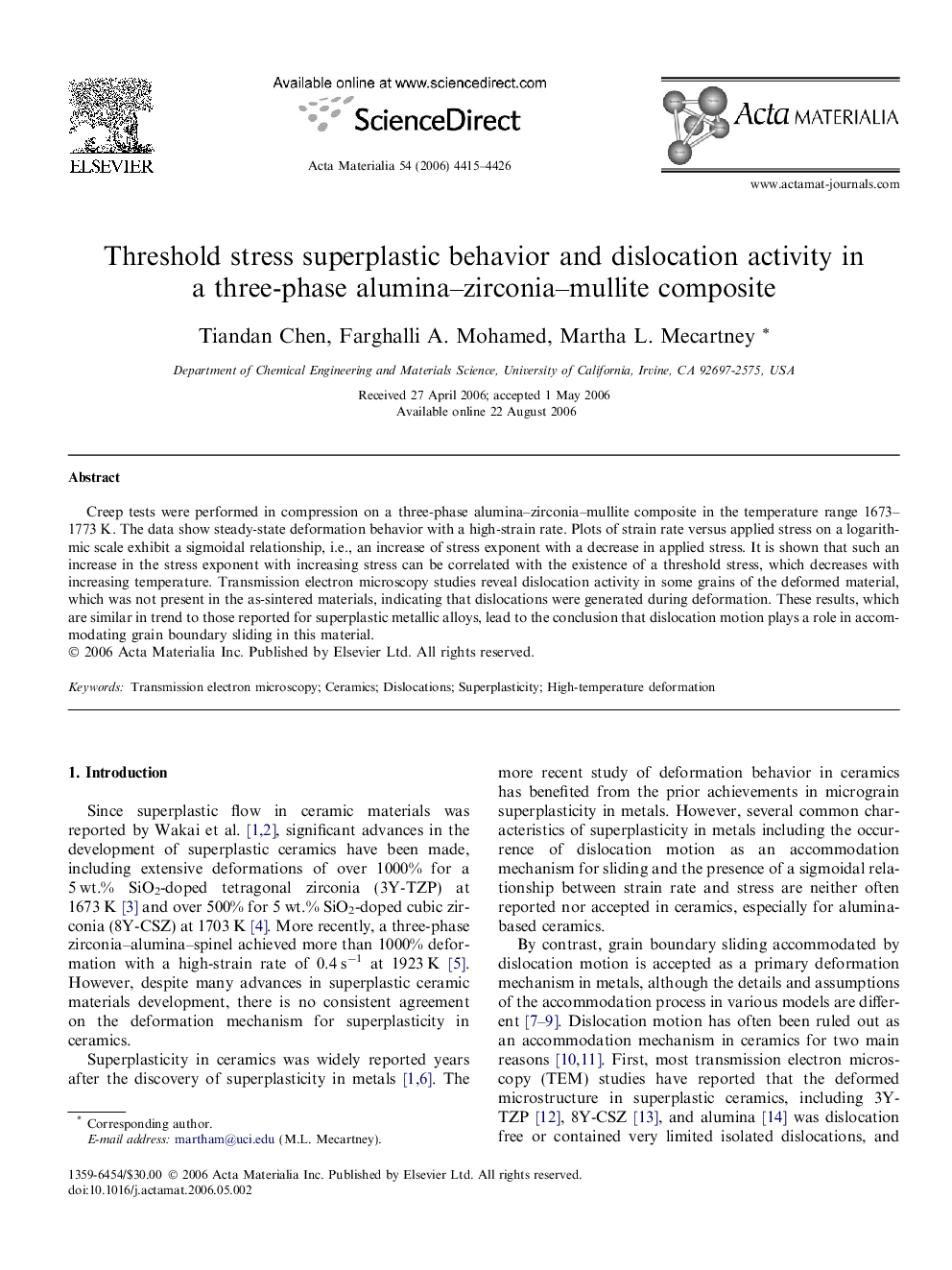| Article ID | Journal | Published Year | Pages | File Type |
|---|---|---|---|---|
| 1450285 | Acta Materialia | 2006 | 12 Pages |
Creep tests were performed in compression on a three-phase alumina–zirconia–mullite composite in the temperature range 1673–1773 K. The data show steady-state deformation behavior with a high-strain rate. Plots of strain rate versus applied stress on a logarithmic scale exhibit a sigmoidal relationship, i.e., an increase of stress exponent with a decrease in applied stress. It is shown that such an increase in the stress exponent with increasing stress can be correlated with the existence of a threshold stress, which decreases with increasing temperature. Transmission electron microscopy studies reveal dislocation activity in some grains of the deformed material, which was not present in the as-sintered materials, indicating that dislocations were generated during deformation. These results, which are similar in trend to those reported for superplastic metallic alloys, lead to the conclusion that dislocation motion plays a role in accommodating grain boundary sliding in this material.
